- Understanding Composting
- Benefits of Composting
- The Composting Process
- Types of Composting
- Using Compost
- Benefits of composting
- 1. Reduces waste
- 2. Enriches soil
- 3. Reduces chemical use
- 4. Retains moisture
- 5. Reduces erosion
- 6. Encourages beneficial organisms
- 7. Cost-effective
- 8. Reduces greenhouse gas emissions
- 9. Supports sustainable agriculture
- Choosing the right composting method
- 1. Backyard Composting
- 2. Vermicomposting
- 3. Bokashi Composting
- 4. Trench Composting
- Step 1: Gather your waste materials
- What can be composted?
- What should be avoided?
- Preparing your waste materials
- Step 2: Build or purchase a composting container
- Option 1: Build your own composting container
- Option 2: Purchase a composting container
- Step 3: Mix and maintain your compost pile
- Mixing the compost pile:
- Maintaining the compost pile:
- Step 4: Monitor and troubleshoot your compost
- 1. Check the temperature
- 2. Turn the pile
- 3. Check the moisture level
- 4. Adjust the carbon-to-nitrogen ratio
- 5. Watch for pests
- 6. Troubleshoot common issues
- Step 5: Using your finished compost
- 1. Mulch for your garden
- 2. Soil amendment
- 3. Potting mix
- 4. Top-dressing for lawns
- 5. Compost tea
- 6. Planting holes for new plants
- 7. Compost as a feedstock
- 8. Share your compost
- “Question-Answer”
- What is composting? How does it work?
- Why should I compost?
- What materials can be composted?
- How do I start composting at home?
- Can I compost in a small space?
- How long does composting take?
- What are some common composting problems?
- “Video” Compost making for beginners – a step by step easy guide – UK Allotment (Zone 8)
Composting is an essential practice for those who strive to live a sustainable lifestyle and reduce their impact on the environment. It involves the decomposition of organic waste materials, such as food scraps, yard trimmings, and leaves, into nutrient-rich compost that can be used to improve soil health and enhance plant growth. While traditional composting methods can take months or even years to produce usable compost, quick composting offers a faster and more efficient approach.
Quick composting utilizes a combination of high temperatures, proper moisture levels, and regular turning to accelerate the decomposition process. With the right techniques and a few simple steps, you can transform your kitchen and garden waste into valuable compost in just a matter of weeks. In this step-by-step guide, we will walk you through the process of quick composting, helping you turn your waste into maximum benefits for your garden and the environment.
To start quick composting, you will need a compost bin or container to hold your organic waste. This can be a dedicated compost bin or a simple DIY setup, such as a wooden box or a repurposed garbage can. It’s important to choose a location for your compost bin that is easily accessible and receives a sufficient amount of sunlight, as heat is crucial for the decomposition process.
Once you have your compost bin set up, the next step is to gather your organic waste materials. This can include fruit and vegetable scraps, coffee grounds, tea bags, eggshells, grass clippings, leaves, and even shredded paper. It’s important to note that certain items, such as meat, dairy products, and oily materials, should be avoided as they can attract pests and slow down the composting process.
Understanding Composting
Composting is a natural process of decomposing organic matter, such as food scraps, yard waste, and plant material, into a nutrient-rich soil amendment called compost. Compost is often referred to as “black gold” because of its many benefits for plants and the environment.
Benefits of Composting
- Improves soil health: Compost enriches the soil by improving its structure, water retention, and nutrient-holding capacity. It also provides essential nutrients to plants, promoting their growth and overall health.
- Reduces waste: Composting diverts organic waste from landfills, reducing greenhouse gas emissions and methane production. It helps to reduce the amount of waste that ends up in landfills and contributes to climate change.
- Saves money: Composting can save you money by reducing the need for chemical fertilizers and soil amendments. It also reduces water usage by improving soil moisture retention, resulting in lower water bills.
- Supports biodiversity: Compost provides a habitat for beneficial microorganisms, insects, and earthworms, which play a crucial role in maintaining soil fertility and overall ecosystem health.
The Composting Process
The composting process involves the decomposition of organic matter by microorganisms, such as bacteria, fungi, and actinomycetes. These microorganisms break down the organic matter into simpler compounds, releasing heat, carbon dioxide, and water as byproducts.
Some of the key factors that influence composting process are:
- Carbon-to-nitrogen ratio: A proper balance between carbon-rich “brown” materials (such as dry leaves, straw, and cardboard) and nitrogen-rich “green” materials (such as vegetable scraps, grass clippings, and coffee grounds) is necessary for successful composting.
- Moisture: Composting works best when the pile is moist, but not waterlogged. Ideally, the compost pile should have a moisture content similar to a damp sponge.
- Aeration: Oxygen is essential for the decomposition process. Regularly turning or aerating the compost pile helps to provide oxygen to the microorganisms and speed up the breakdown of organic matter.
- Temperature: Composting generates heat, and the internal temperature of the compost pile can rise to as high as 140-160°F (60-71°C). This high temperature helps to kill weed seeds, pathogens, and harmful bacteria.
Types of Composting
There are various methods of composting, including:
- Backyard composting: This is the most common method of composting for individual households. It involves creating a compost pile or bin in the backyard and managing the composting process.
- Indoor composting: For those who don’t have access to an outdoor space, indoor composting can be done using worm composting (vermicomposting) or Bokashi composting methods.
- Commercial composting: Large-scale composting operations are conducted by commercial facilities that process organic waste from households, businesses, and municipalities. These facilities use advanced techniques to speed up the composting process.
Using Compost
Once the composting process is complete, the resulting compost can be used as a soil amendment, mulch, or potting mix. It can be incorporated into gardens, flower beds, lawns, or potted plants to enhance soil fertility, retain moisture, and suppress weeds.
Compost is a valuable resource that helps to create healthier gardens, reduce waste, and contribute to a sustainable future. By understanding the composting process and adopting composting practices, we can make the most of our organic waste and maximize its benefits.
Benefits of composting
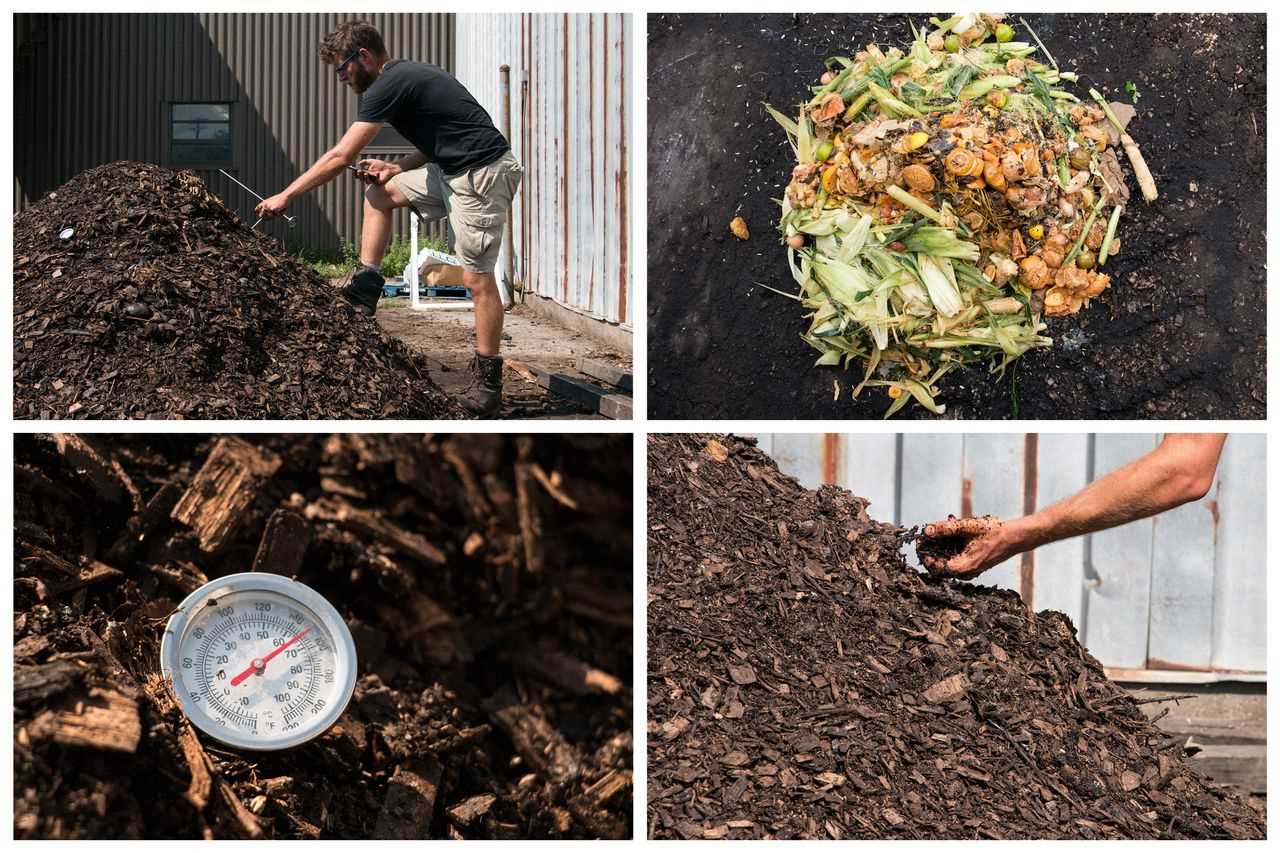
Composting offers numerous benefits for both individuals and the environment. Here are some of the key advantages of composting:
1. Reduces waste
Composting is an effective way to divert organic waste from landfills. By composting, you can significantly reduce the amount of waste that ends up in the landfill, which helps decrease methane gas emissions and reduces the need for landfill space.
2. Enriches soil
Compost is a natural fertilizer that enriches soil with essential nutrients. When added to gardens or agricultural fields, compost improves soil structure, increases water retention, and enhances nutrient availability, leading to healthier and more productive plants.
3. Reduces chemical use
Healthy, nutrient-rich soil created through composting requires fewer chemicals, such as synthetic fertilizers and pesticides, for plant growth. This reduction in chemical use benefits both human health and the environment by minimizing exposure to harmful substances.
4. Retains moisture
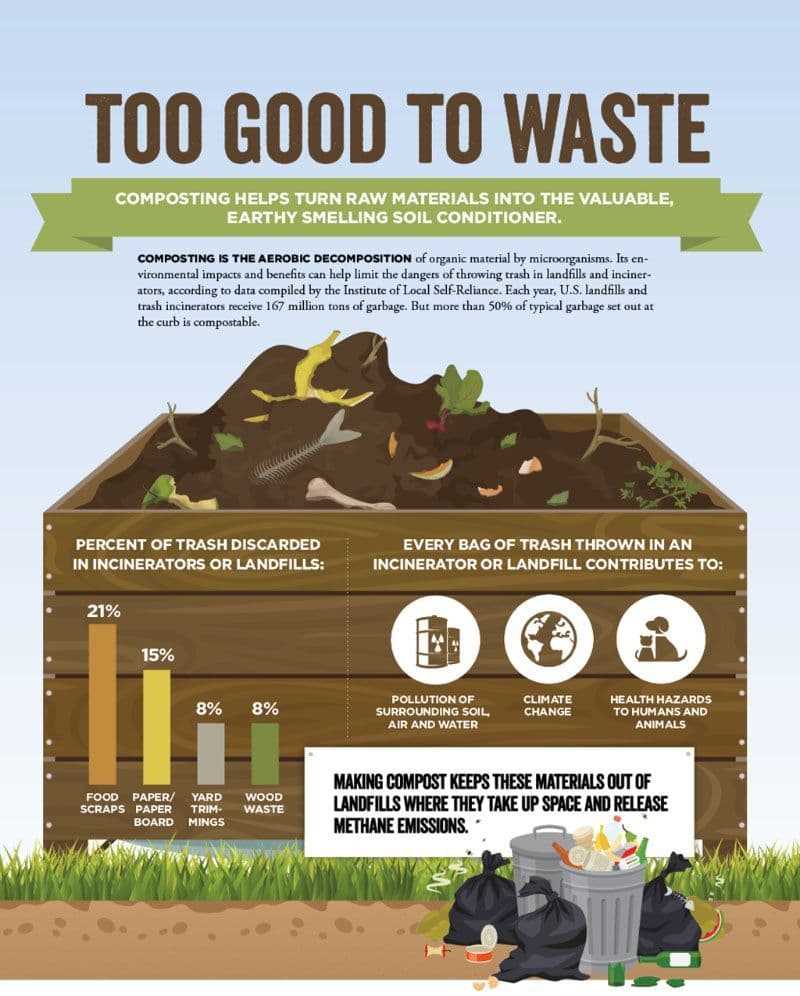
Compost helps soil retain moisture, reducing the need for frequent watering. This is especially beneficial in dry or arid climates, where water conservation is crucial. By retaining moisture, compost helps sustain plants during periods of drought or low rainfall.
5. Reduces erosion
Improved soil structure resulting from composting helps prevent erosion by strengthening the soil’s ability to retain water and resist wind and water forces. Composting can be especially beneficial in areas prone to erosion, such as steep slopes or areas with high rainfall.
6. Encourages beneficial organisms
Compost fosters the growth of beneficial organisms, including earthworms, bacteria, and fungi, which contribute to soil health and fertility. These organisms help break down organic matter, improve nutrient cycling, and suppress disease-causing pathogens.
7. Cost-effective
Composting can save money by reducing the need for commercial fertilizers and soil amendments. It is a low-cost, sustainable solution that utilizes waste materials, such as kitchen scraps and yard trimmings, to create a valuable resource for gardening and landscaping.
8. Reduces greenhouse gas emissions
Composting organic waste reduces greenhouse gas emissions, particularly methane. Methane is a potent greenhouse gas with a significantly greater global warming potential than carbon dioxide. By redirecting organic waste to composting, we can help mitigate climate change.
9. Supports sustainable agriculture
Composting plays a crucial role in sustainable agriculture practices by providing natural soil amendments and reducing reliance on synthetic inputs. It helps build healthy, fertile soils that support long-term crop productivity and resilience.
In summary, composting offers a wide range of benefits, from waste reduction and soil enrichment to water conservation and climate change mitigation. By incorporating composting into our daily lives, we can contribute to a healthier environment and create a more sustainable future.
Choosing the right composting method
Composting is an excellent way to reduce waste, improve soil health, and create nutrient-rich materials for your garden. However, choosing the right composting method is crucial to ensure that the process is efficient and effective. Let’s explore some popular composting methods and their benefits:
1. Backyard Composting
Backyard composting is the most common and easiest method for beginners. It involves setting up a compost pile or bin in your backyard and adding organic waste materials, such as food scraps, yard trimmings, and paper products. This method allows for easy access and management of the compost pile, and it can be done on a small scale.
2. Vermicomposting
Vermicomposting is a technique that uses worms to break down organic waste materials. It requires a specialized worm bin and the addition of red worms, which feed on organic matter and produce nutrient-rich worm castings. Vermicomposting is ideal for small spaces such as apartments or homes without a backyard. It also produces compost quickly and efficiently.
3. Bokashi Composting
Bokashi composting is a method that involves fermenting organic waste using beneficial microorganisms. It requires a special Bokashi bucket and Bokashi bran, which is mixed with the waste materials. The fermentation process is anaerobic, meaning it doesn’t require oxygen. Bokashi composting is a great option for those who want to compost meat, dairy, and other traditionally difficult-to-compost items.
4. Trench Composting
Trench composting involves digging a trench in your garden and burying organic waste directly into the soil. This method is useful for larger-scale composting or if you have a surplus of organic waste. As the waste decomposes in the trench, it enriches the soil and reduces the need for additional fertilizers. Trench composting is a simple method that doesn’t require any specialized equipment.
When choosing a composting method, consider factors such as available space, the amount and type of waste you generate, and the time and effort you’re willing to invest. Regardless of the method you choose, composting is a sustainable practice that benefits both the environment and your garden.
Step 1: Gather your waste materials
Before you can start composting, it’s important to gather the right materials. Composting is the process of breaking down organic waste, so you’ll want to collect a variety of organic materials to ensure a nutrient-rich final product.
What can be composted?
Almost any organic material can be composted, but there are some guidelines to follow to ensure successful decomposition:
- Vegetable and fruit scraps
- Coffee grounds and filters
- Eggshells
- Grass clippings
- Leaves
- Shredded newspaper
- Tea bags
- Manure from herbivores (horse, cow, rabbit, etc.)
What should be avoided?
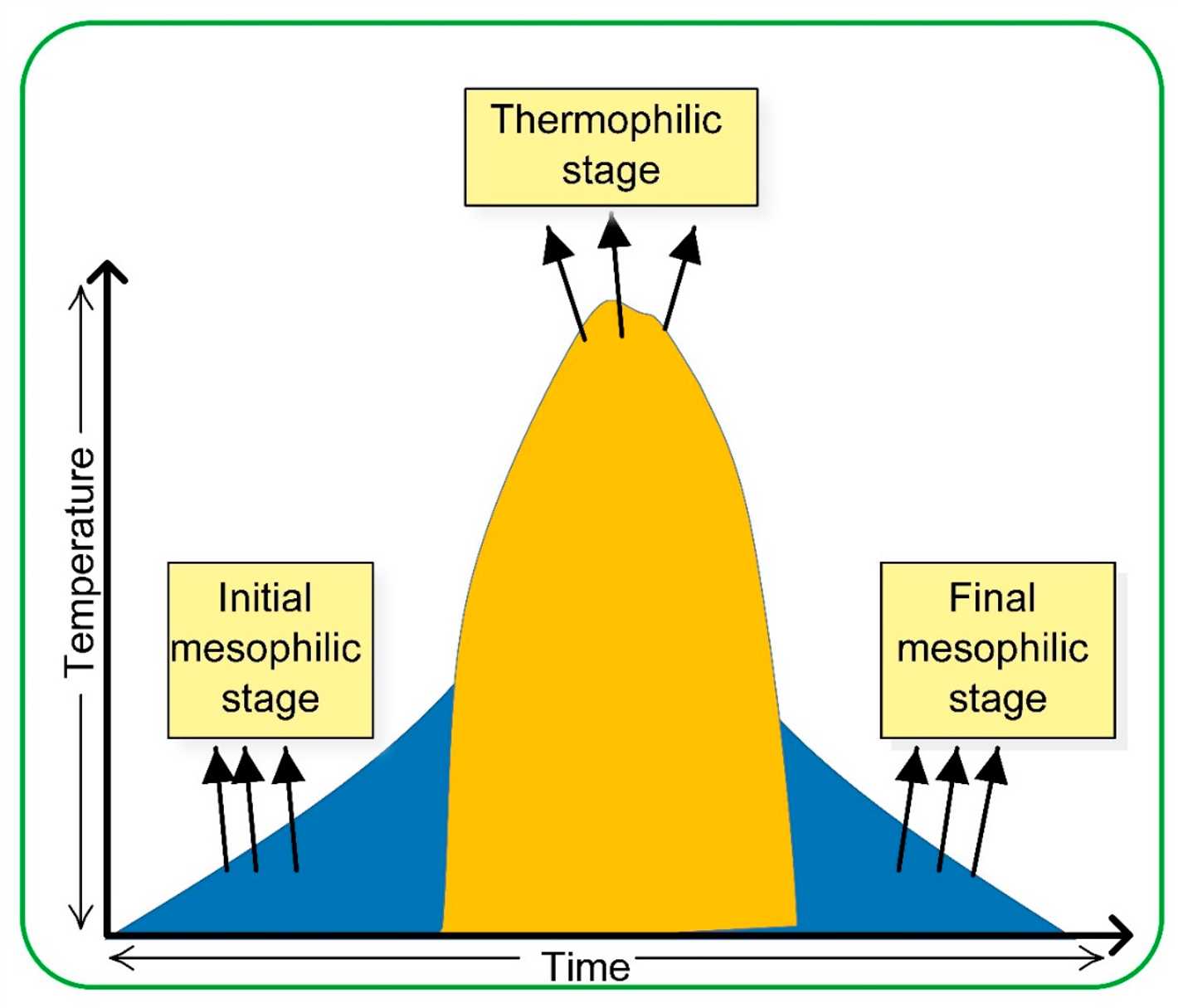
It’s important to avoid certain materials that can disrupt the composting process or introduce harmful chemicals:
- Meat, fish, and dairy products
- Oily or greasy materials
- Coal or charcoal ashes
- Pet waste
- Chemically treated wood or sawdust
Preparing your waste materials
Once you’ve gathered your organic waste materials, it’s important to prepare them properly for composting:
- Chop or shred larger materials like branches or garden trimmings to accelerate decomposition.
- Layer brown and green materials to ensure a balanced carbon-to-nitrogen ratio. Browns include dry leaves, straw, and shredded newspaper, while greens include fresh grass clippings and vegetable scraps.
- Mix the materials together to ensure even decomposition and to prevent matting or clumping.
By gathering the right waste materials and preparing them properly, you’ll be ready to start composting and turning your waste into a valuable resource. Stay tuned for step 2: Setting up your compost pile!
Step 2: Build or purchase a composting container
Once you have identified the location for your compost pile, the next step is to build or purchase a composting container. This container will help contain the organic waste and provide the conditions necessary for the composting process to occur efficiently.
Option 1: Build your own composting container
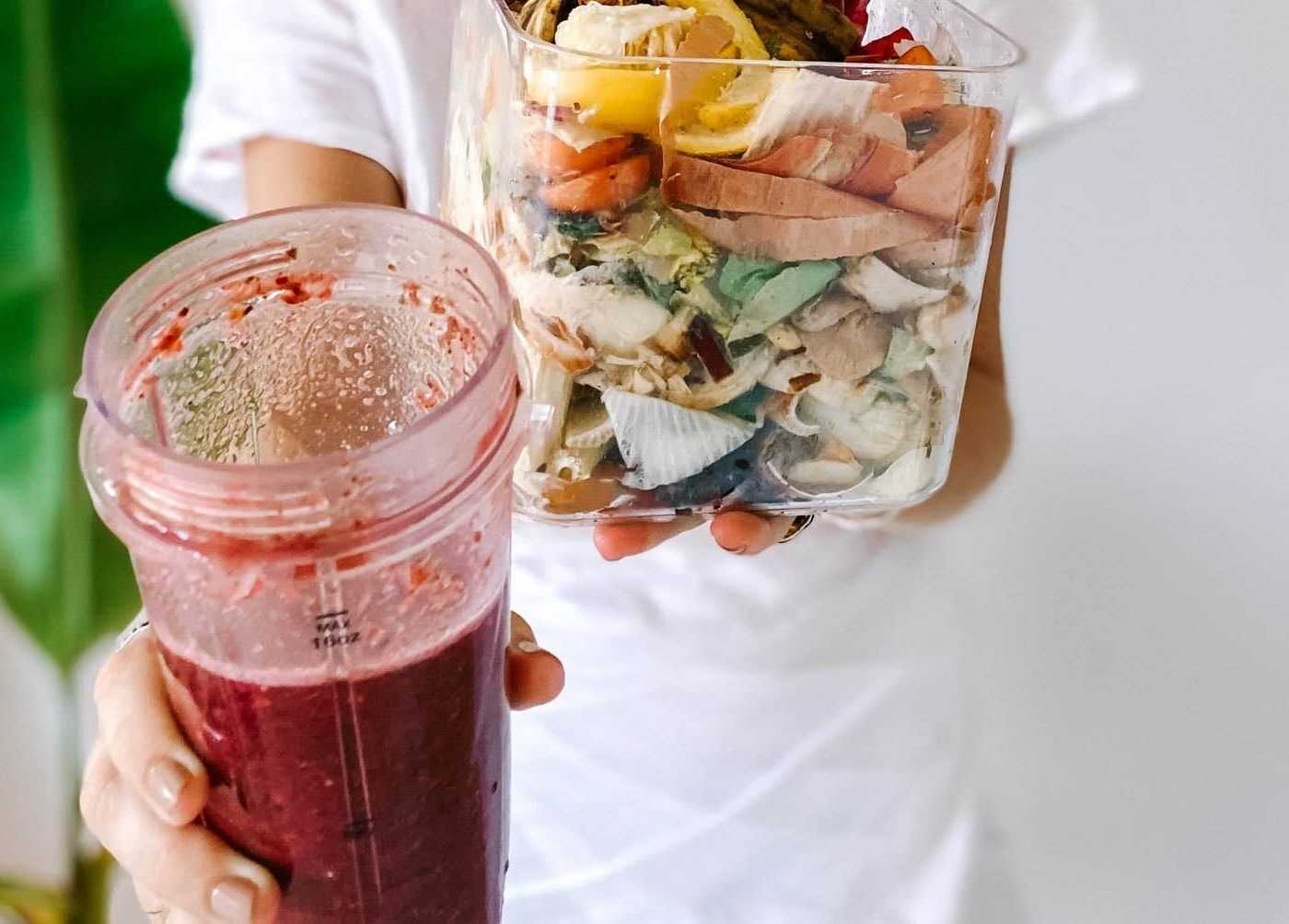
If you prefer a DIY approach, you can build your own composting container using various materials such as wood, wire mesh, or even recycled materials. Here is a simple step-by-step guide to building a composting container:
- Choose the size and shape of your container based on the amount of waste you have and the available space.
- Construct a frame using wooden planks or use wire mesh to create a box-like structure.
- Ensure there are enough gaps or holes in the container to allow for air circulation.
- Add a hinged or removable lid to the container to keep pests out and prevent excessive moisture from entering.
Remember to consider the dimensions of your composting container to ensure it will fit in the designated area and accommodate the amount of waste you generate. Additionally, it is important to choose materials that are non-toxic and will not release harmful substances into the compost.
Option 2: Purchase a composting container
If you prefer a ready-made solution, there are various composting containers available for purchase. These containers are specifically designed to facilitate the composting process and often come with features such as aeration vents and removable doors or lids for easy access.
When choosing a composting container, consider the following factors:
- Size: Ensure the container is large enough to accommodate your waste volume.
- Materials: Look for containers made from durable materials such as recycled plastic or metal.
- Features: Consider additional features such as aeration vents, removable doors, or lids.
- Price: Compare prices and read reviews to find a composting container that fits your budget and needs.
Remember, the main goal is to provide a suitable environment for the composting process to occur, so whether you choose to build or purchase a composting container, make sure it meets your specific requirements.
Step 3: Mix and maintain your compost pile
Mixing and maintaining your compost pile is crucial for the breakdown of organic materials and the creation of nutrient-rich compost. Follow these steps to ensure a successful composting process:
Mixing the compost pile:
- Use a pitchfork or a shovel to turn the compost pile regularly. This helps to incorporate air into the pile and speeds up the decomposition process.
- Make sure to mix the materials thoroughly to ensure even distribution of organic matter and microorganisms.
- Avoid compacting the compost pile as it can restrict airflow and slow down decomposition. Keep the pile loose and fluffy.
Maintaining the compost pile:
- Monitor the moisture level of the compost pile. It should be moist, like a wrung-out sponge. Add water if the pile is too dry or cover it with a tarp if it’s too wet to prevent excessive moisture loss or waterlogging.
- Regularly check the temperature of the compost pile. It should be between 135°F and 160°F (57°C and 71°C) to promote the activity of beneficial microorganisms. If the temperature is too low, add more nitrogen-rich materials. If it’s too high, add more carbon-rich materials.
- Turn the compost pile every 2-3 weeks to ensure even decomposition and prevent the formation of anaerobic pockets.
- Keep the compost pile covered with a tarp or a compost bin to retain moisture and heat.
By regularly mixing and maintaining your compost pile, you will create optimal conditions for the organic materials to decompose and transform into nutrient-rich compost. This will allow you to maximize the benefits of your compost pile and produce high-quality compost for your garden or plants.
Step 4: Monitor and troubleshoot your compost
Once you have started your compost pile, it’s important to monitor its progress and troubleshoot any issues that may arise. Here are some key steps to follow:
1. Check the temperature
The temperature of your compost pile is an important indicator of its progress. Ideally, the temperature should be between 135°F and 160°F (57°C and 71°C) to ensure effective decomposition. Use a compost thermometer to monitor the temperature regularly.
2. Turn the pile
Turning the compost pile regularly helps to aerate it and distribute the decomposition process more evenly. Use a pitchfork or shovel to turn the pile every 1-2 weeks. This will also help prevent the formation of anaerobic conditions, which can lead to a foul odor.
3. Check the moisture level
Moisture is crucial for composting. The pile should be moist like a wrung-out sponge. If it’s too dry, add water to moisten it. If it’s too wet, add dry materials like straw or shredded newspaper to absorb the excess moisture.
4. Adjust the carbon-to-nitrogen ratio
The carbon-to-nitrogen ratio (C:N ratio) is an important factor in composting. A balanced ratio of about 30:1 is ideal for decomposition. If your compost is taking too long to break down, add more nitrogen-rich materials like grass clippings. If it’s too smelly, add more carbon-rich materials like dry leaves or sawdust.
5. Watch for pests
Occasionally, pests like rodents or flies may be attracted to your compost pile. To deter pests, avoid adding meat, dairy, or oily foods to the pile. If you notice an infestation, cover the pile with a tarp or use a wire mesh to prevent access.
6. Troubleshoot common issues
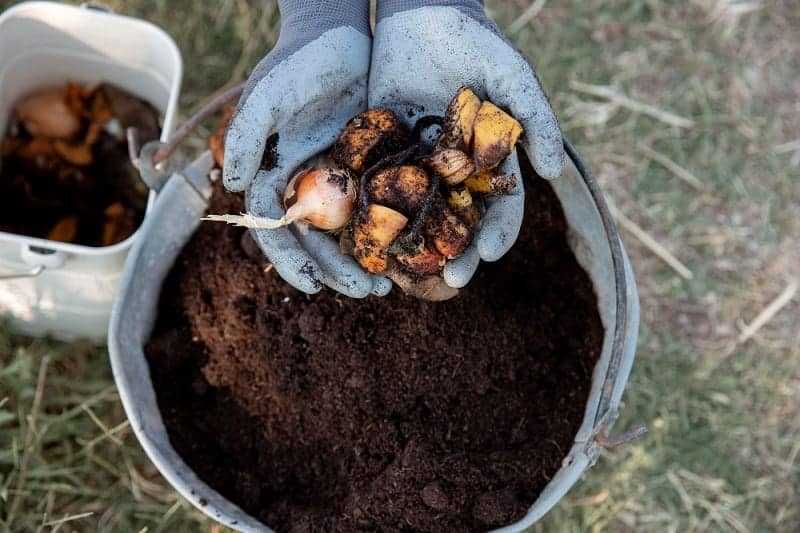
If you encounter any issues with your compost pile, such as a foul odor, slow decomposition, or excessive moisture, consult a troubleshooting guide or seek advice from composting experts. They can help identify the problem and provide solutions.
By monitoring and troubleshooting your compost pile regularly, you can ensure that it remains healthy and produces high-quality compost for your gardening needs.
Step 5: Using your finished compost
1. Mulch for your garden
One of the main benefits of using finished compost is that it makes an excellent mulch for your garden. Spread a layer of compost about 2-3 inches thick around the base of your plants and vegetables. This will help conserve moisture, suppress weed growth, and provide essential nutrients to the soil as it decomposes.
2. Soil amendment
You can also mix your finished compost into your garden soil to improve its structure and fertility. Spread a layer of compost over your garden bed and use a rake or shovel to incorporate it into the top few inches of soil. This will help improve drainage, moisture retention, and nutrient availability for your plants.
3. Potting mix
Add your finished compost to potting mixes for indoor and outdoor plants. Compost adds organic matter and essential nutrients, which promote healthy root growth and overall plant health. Mix compost with equal parts of vermiculite or perlite and peat moss or coconut coir to create a balanced potting mix.
4. Top-dressing for lawns
If you have a lawn that needs a boost, spread a thin layer of compost over the grass as a top-dressing. Use a rake to distribute the compost evenly and lightly water it in. The compost will gradually release nutrients into the soil, improving the health and appearance of your lawn.
5. Compost tea
You can make compost tea by steeping a bag of finished compost in water for several days. The resulting liquid can be used as a foliar spray or applied to the soil around your plants. Compost tea is rich in beneficial microorganisms and nutrients, providing an extra boost of nutrition for your plants.
6. Planting holes for new plants
When planting new plants, dig a hole twice the size of the root ball, and mix in a generous amount of compost. The compost will help improve soil fertility and create a healthy environment for the roots to establish. Backfill the hole with the compost-enriched soil and plant your new plant.
7. Compost as a feedstock
Use your finished compost as a feedstock for vermicomposting or as a starter for a new compost pile. Adding compost to these systems can help speed up the decomposition process and introduce beneficial microorganisms to your composting system.
8. Share your compost
If you have more compost than you can use, consider sharing it with friends, neighbors, or community gardens. Compost is a valuable resource for gardening and can help others improve their soil and grow healthier plants.
“Question-Answer”
What is composting? How does it work?
Composting is a natural process of decomposing organic materials, such as food scraps and yard waste, into a nutrient-rich soil amendment. It works by creating the right conditions for microorganisms to break down the waste into simpler substances.
Why should I compost?
Composting is beneficial for several reasons. First, it helps divert organic waste from landfills, which reduces greenhouse gas emissions. Second, it produces nutrient-rich compost that can improve soil health and fertility. Lastly, it helps close the nutrient cycle by returning organic matter back to the earth.
What materials can be composted?
Many organic materials can be composted, including fruit and vegetable scraps, coffee grounds, tea bags, yard trimmings, and leaves. However, it’s important to avoid composting meat, dairy products, oily/greasy waste, and diseased plants.
How do I start composting at home?
To start composting at home, you’ll need a compost bin or pile, the right mix of organic materials (known as green and brown materials), and some basic knowledge of the composting process. The green materials are rich in nitrogen and include things like food scraps and grass clippings, while the brown materials are rich in carbon and include items like leaves and straw.
Can I compost in a small space?
Yes, composting can be done in small spaces. There are various options available, such as compost tumblers, worm composting bins, and even indoor composters. These compact solutions allow for efficient composting in limited areas.
How long does composting take?
The time it takes for compost to fully decompose can vary depending on factors like the size of the compost pile, the ratio of green to brown materials, and the temperature and moisture levels. In general, it can take anywhere from a few months to a year for composting to complete.
What are some common composting problems?
Some common composting problems include bad odors, a lack of decomposition, excessive moisture, and pest infestations. These issues can often be addressed by adjusting the carbon-to-nitrogen ratio, maintaining proper moisture levels, turning the compost pile regularly, and avoiding adding certain materials like meat or dairy products.







